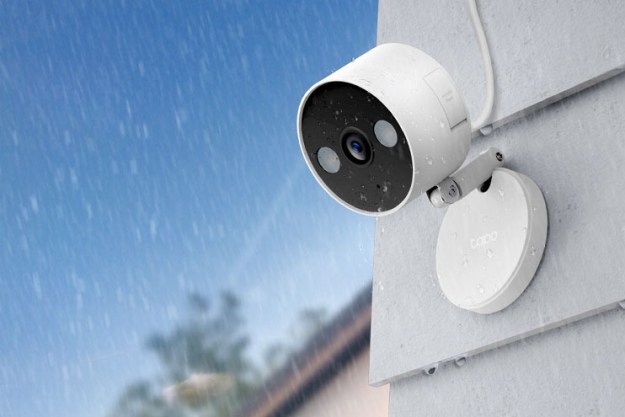
In June, I saw my younger brother, Kyle, smile for the first time in nearly four months.
When one of my siblings said that they hadn’t seen him smile yet, I suggested, “Ask him to show you his teeth.” Because even though I was in Seattle and the rest of my family was in Michigan, thanks to FaceTime, I was able to stay connected and watch my brother recover from near-death.
At the end of February this year, Kyle was visiting me in Portland, Oregon; he and my parents were in town to help out, with less than a week to go before my wedding. He was crossing the street in front of my apartment when he was hit by a car. Ten months later, it’s still hard for me to relive that day and the weeks that followed. The night before my wedding day, I rushed to the ICU. My brother would stabilize, then his intracranial pressure would spike. For four days he skirted death, after doctors removed a bone flap in his skull, allowing his brain to swell. Again, he stabilized.
The next day, my dad performed our wedding ceremony in Kyle’s chilly ICU room. He was so still in his hospital bed, attached to an unimaginable amount of wires and tubes. His monitor beeped in the background as we said “I do.”
Through FaceTime, I was able to see what we’d started calling Kyle’s “resting grumpy face.”
Over the next few weeks, an article in New York Magazine — charting a 19-year-old’s traumatic brain injury day by day — became a roadmap that led us to hope and despair. The doctors and nurses had a mantra: “Every brain injury is different.” Whether the shearing in Kyle’s brain, which tore the axons connecting his gray and white matter, would leave him in a permanently vegetative state was impossible to predict.
“He’s young,” the nurses would tell us. “That’s the best thing he has going for him right now.”
A few days before a special plane took Kyle from Portland back to Michigan— with doctors, nurses, and medical equipment at the ready should anything go wrong — I sent a video to my brother and sister. Kyle was lifting his leg — on command, or so it seemed to my parents and me. The nurses would smile tightly, refusing to share in our enthusiasm. The crash that comes after you get hopeful is so much worse than tempered practicality. Still, my mom would tell me, “He’s in there.”
With Kyle now more than 2,000 miles away, I felt 100 percent helpless. When I worked from his hospital room, at least I could play music for him or read him an article I thought he’d like. When I was far away, every update was second-hand, from my parents or siblings. The doctor put him on a neurostimulant, and it seemed to work remarkably well. Nearly two months after the accident, a nurse asked him if he was in pain, and in a very faint whisper, Kyle said, “No, not right now.”
More than words
I gave my mom my iPad and taught her how to use FaceTime. It changed everything. The first time I saw him, I could see how much he had improved. His eyes were open, and he would occasionally look at me. This was a big change from when I’d last seen him. Back then, the doctors and nurses would ask if he was more likely to look at someone with a familiar voice, and it didn’t seem to be the case. He kept his eyes closed most of the time in Portland, but when he’d open them, the nurses would all coo. “Look at those eyes,” they’d say. He does have pretty, marbled blue eyes, but it was hard to see them staring at seemingly nothing.

Throughout May, I regularly Facetimed Kyle. He had what we liked to call his “resting grumpy face.” (It sort of looked like that emoji where the mouth is an upside-down “U.”) He was able to mouth words like “hi” but wasn’t very communicative. If you held his hand, he’d sometimes squeeze once for yes and twice for no. He could answer questions by snapping once or twice, too. But sometimes he wouldn’t do either. Still, without seeing him snapping or mouthing the occasional word, I’d have been having a completely one-way conversation with him. He spent his days in therapy, working on redeveloping muscle tone so one day he could learn to walk again. His occupational therapist would give him a phone to see if he would put it to his ear and try to talk. She gave him a comb and asked to him comb his hair.
He was progressing, but it wasn’t a constant upward tick. Some days when I’d talk to him, he’d have his face turned from the iPad and wouldn’t respond to questions. I would ask if he was in pain, and he might give a slight shake of his head but it wasn’t clear if much else I was saying was making an impact. I often FaceTimed through my computer and hold up my phone to show him videos I thought he’d like, such as Titus Andromedon’s “Outside Bones” song from Unbreakable Kimmy Schmidt. I also sang along to songs we used to listen to together.
Making connections
One Sunday in May, I asked him what day tomorrow would be. He mouthed “Monday.” It was hard to make out things he was mouthing, so his speech therapist used a board with letters to have him spell out words. She asked his favorite breakfast, and he pointed out C-H-A then stopped. Both the therapist and my mom were stumped, before my mom realized he was spelling charcuterie, which he’d often get at a local restaurant for brunch. We were all astonished, and the fact that he couldn’t spell charcuterie didn’t surprise us. Spelling had never been his strong suit.
By the end of June, Kyle was able to get out a few scratchy whispers. It was clear he could follow complex discussions, like when I explained Brexit to him. It wasn’t until he relearned to use his voice — which was higher pitched and more monotone than before — that we really knew he still had his same sense of humor. Upon hearing how musically inclined Kyle is, one of the nurses said he was “Just like Prince.” “I’m prettier,” Kyle replied. When my sister told him he was putting on some weight, Kyle boasted he was working on his “dad bod.”
So much technology and technique went into saving my brother’s life, that I’m not even sure how he would have fared even 10 years ago.
When people romanticize different eras — 1920s Paris, say — it’s not fun for me to participate. So much technology and technique went into saving my brother’s life, that I’m not even sure how he would have fared even 10 years ago. I could talk about the monitors, with their mysterious squiggles and numbers my family learned to decipher. Or the MRI machines that gave us glimpses inside his head. But it was FaceTime that let me see that, while he couldn’t always remember what he’d eaten 20 minutes earlier or recall where I worked, he could still remember every word to songs that I burned onto CDs for him 15 years ago.
He wasn’t able to go to my brother’s wedding in August, but he watched the whole ceremony from his bed at the rehabilitation center. I was FaceTiming when I saw that first smile. No one knows how much more progress he’ll make or what the timeline looks like, but at least I’ll be able to watch it happen, even from several states away.
My sister had a baby at the end of April, two months after Kyle’s accident. I got my first glimpse of her on FaceTime. Since she lives in Michigan, too, I also FaceTime with her regularly. Though she’s only seven months old, she already recognizes the ding my sister’s phone makes when I FaceTime and immediately, she starts smiling.
An estimated 2.4 million children and adults sustain a traumatic brain injury each year in the U.S. For more information, you can visit The Brain Injury Association of America.


